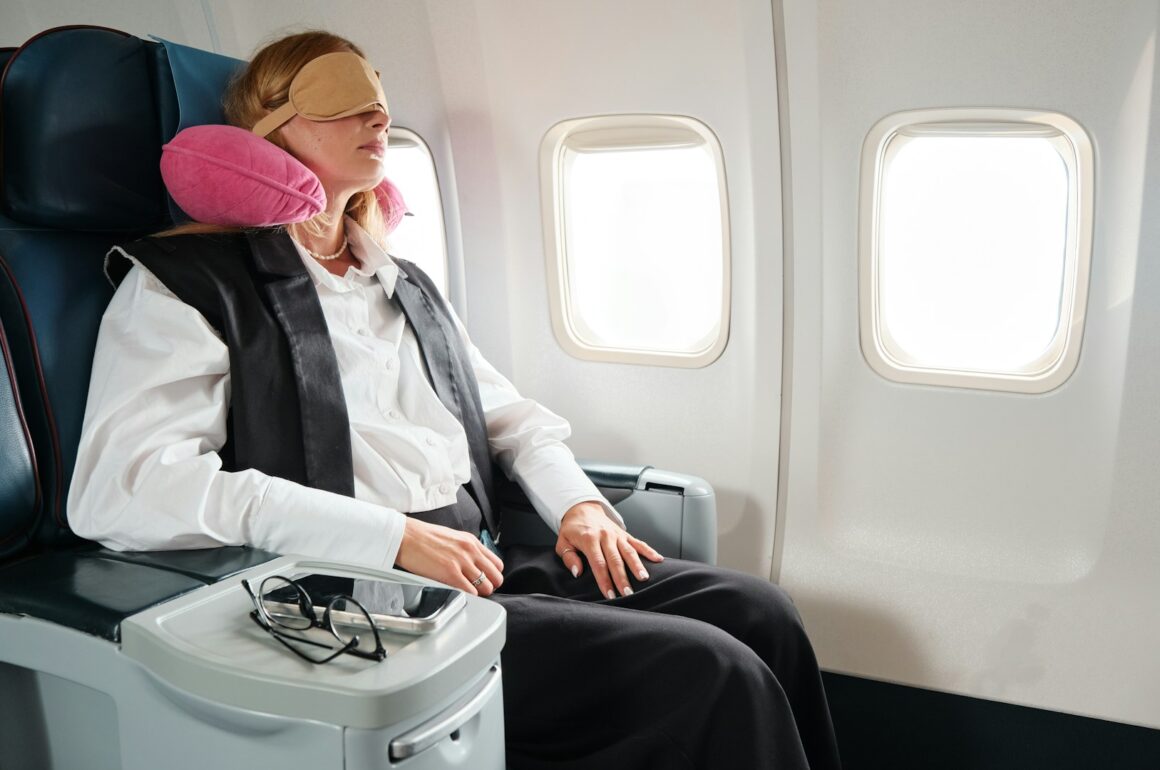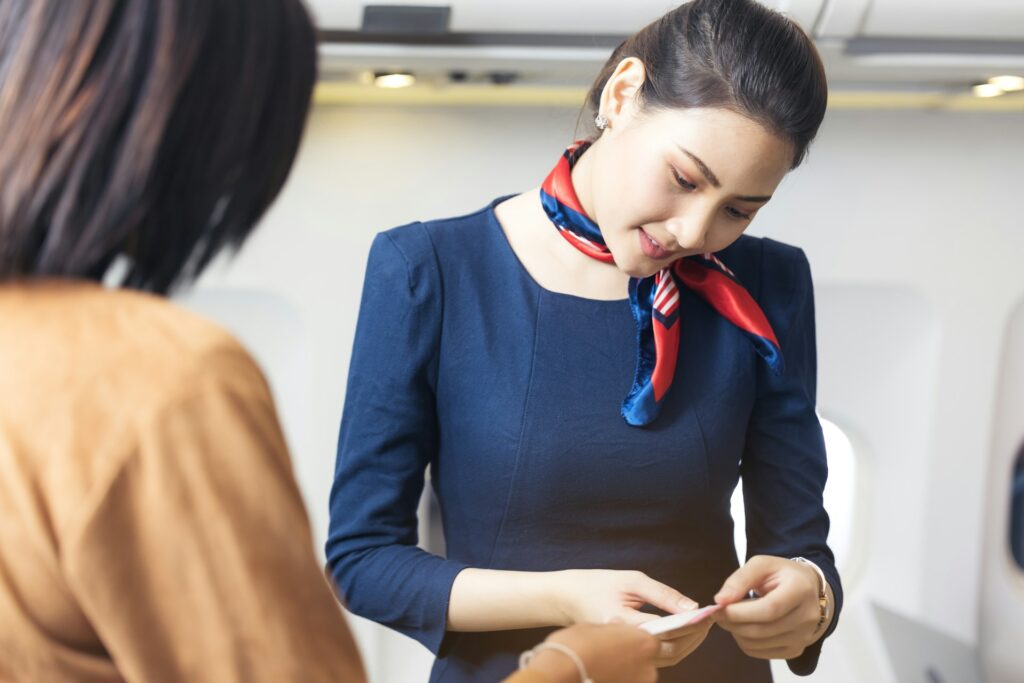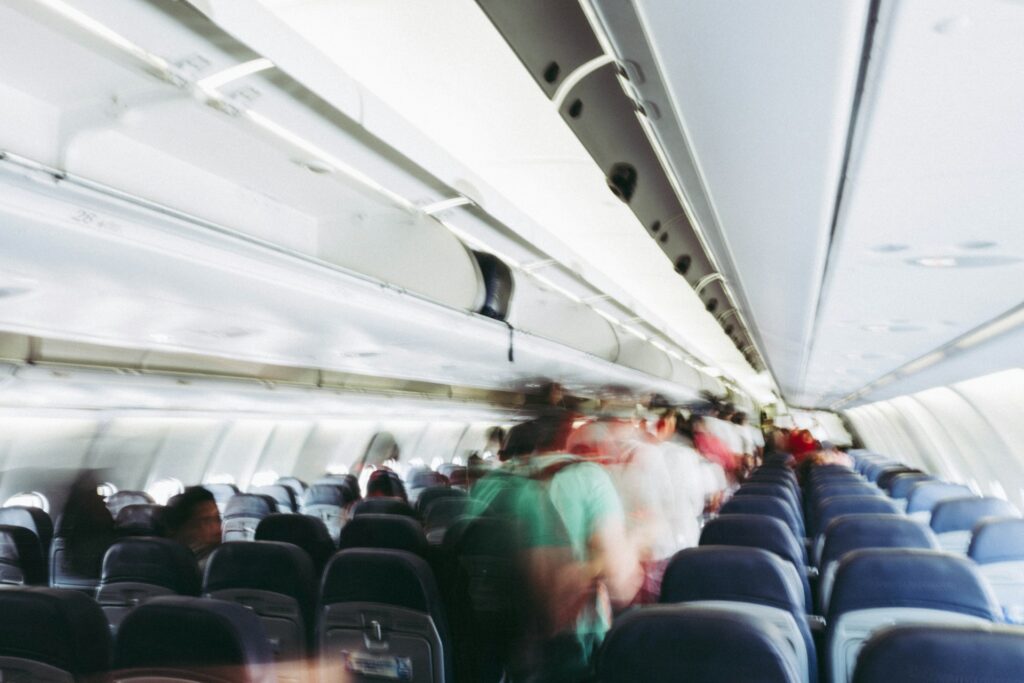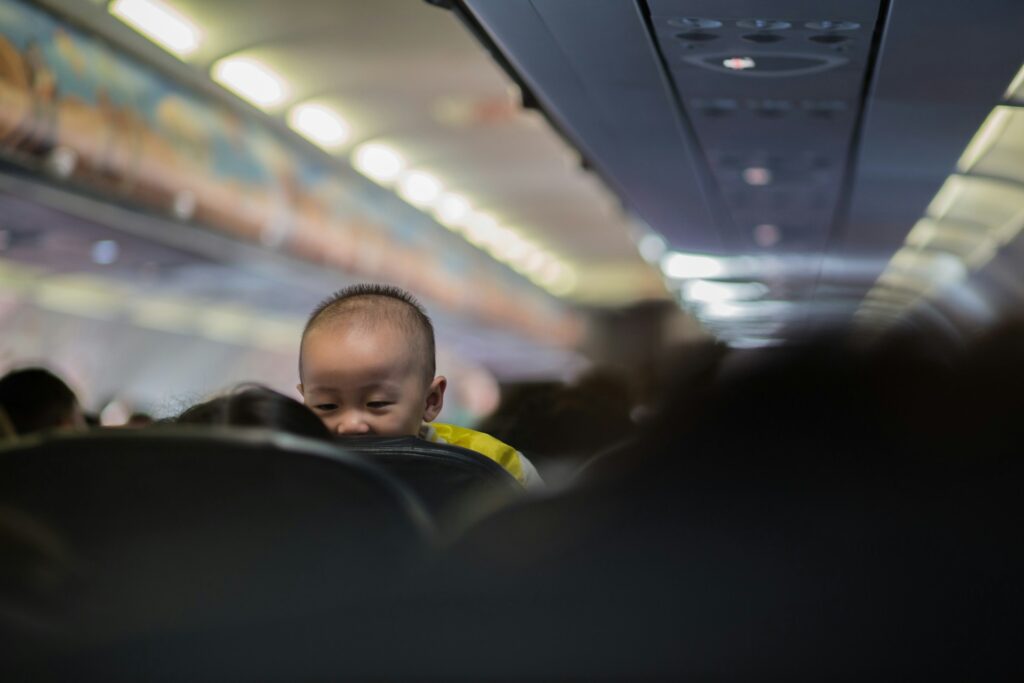
Airplane etiquette is broadly the same as standard, everyday etiquette, but there are some specific differences that come up repeatedly. These include (but are not limited to) reclining your seat, using the overhead bins, employing tray tables and – quelle horreur – bare feet. Let’s tackle how to do the right thing by everyone, once and for all.
Embarkation: starting as you mean to go on
As you board the plane, you will want to say hello to the flight attendants waiting to greet you and potentially to some of your fellow passengers, too. This may sound obvious, but as you try to navigate the tiny aisle with your carry-on in one hand, your passport in the other, and all the many thoughts in your head, it can be difficult to remember to exchange common courtesies.
Hello is an important first step in not getting so wrapped up in your own journey that you forget about everyone else’s, which means it’s a good time to take a break from noise canceling headphones, too (more on those later). Do extend the good vibes when stowing your baggage – of course you want to be near your stuff, but the space above your head is not yours by right. Make space and compromises where you can, help your fellow passengers hoist their bags.
Save for later: The Airlines With the Most Luxurious First-Class Bathrooms

The A, B, C (and D, E, F) of airplane seating
The big question: what is the middle seat etiquette on a plane? Well, it’s generally agreed that both armrests are yours, but you must pay attention to how you’re using them – two arms so relaxed that you have an elbow in the face of both neighbours is not acceptable, for instance. Keep in mind the person in the window seat can lean that way, but the person in the aisle seat has nowhere else to turn. Meanwhile, if you’re in the window seat, you’re in charge of the window shade. It’s your choice whether it’s open or closed, but it doesn’t hurt to turn to the person next to you before you close it, to make sure they don’t mind.
If for some reason you need to switch seats (for access to the bathroom, to be near your family), ask politely, and offer a comparable seat to the one they have. Never take someone’s seat before they’ve boarded, and do take no for an answer – they, like you, may have good reason. That said, if you’re asked to switch seats, do honor the request if you can. It could radically transform someone’s journey.
You might also like: Flying First Class: The Luxury Gold First-Timers’ Guide

Keeping it civilized at 40,000 feet
Noise canceling headphones can pose a significant barrier to airplane etiquette, but that doesn’t mean you shouldn’t wear them. They can also be a very helpful tool for switching off from screaming babies and overly chatty neighbours, protecting your patience and personal space. As a rule of thumb, just slide them off while flight attendants talk you through safety protocols, and whenever you see a cart approaching. That way, you won’t get frustrated when you miss out on snacks either.

Flying with (and in the vicinity of) children
Noone is having a harder time than the parent or carer of an unhappy child. Always bear that in mind, as a minimum. Beyond that, if you can offer a stressed parent or baby a smile, it will go a long way. If you happen to be the passenger in the seat in front, exercise patience for the first few minutes while the family behind you settles in to the unfamiliarity and discomfort of the plane. If you feel the dreaded kick in the back, just give the parents a few minutes to deal with it before you speak up. On the other hand, if you’re the parent: watch those small but mighty feet. They are one of the cornerstones of airplane etiquette.
Read next: 10 best Airlines for Business Class

The seatbelt light is still on…
What is the etiquette when exiting a plane? Should you pop up as soon as you hear the ding and crank open the overhead bin? Or should you remain seated until the last possible moment? If you’re in a hurry, or have a connecting flight to catch, let a flight attendant know so they can help you get off quickly. Otherwise, you may stand when the light goes off and stretch your legs, but try to remain in your own personal space, as you gather your possessions. Don’t enter the aisle to access the overhead bin until it’s clearly your row’s turn. That means giving people in the row before you the time and space they need to access their own belongings.

Finally: feet
Don’t remove your shoes. Don’t do it! Always fly in shoes that will last the distance.
Do you have any favorite airplane etiquette tips? Share them with us in the comments section, below.











Leave a Comment